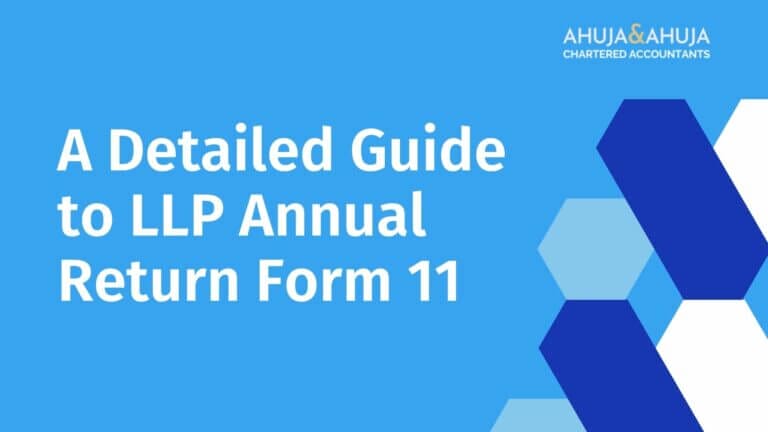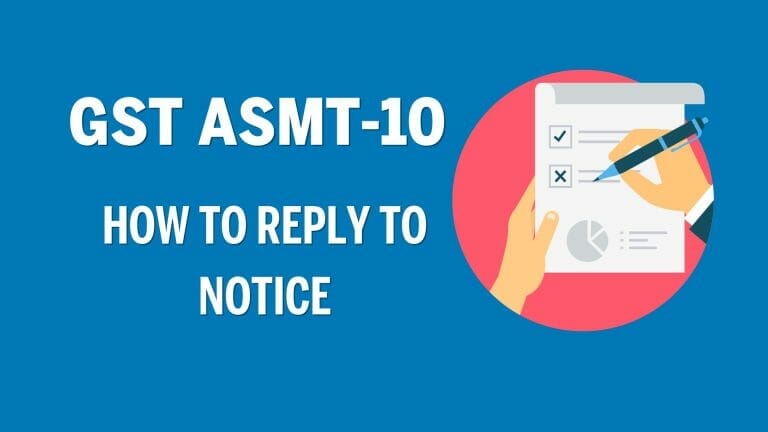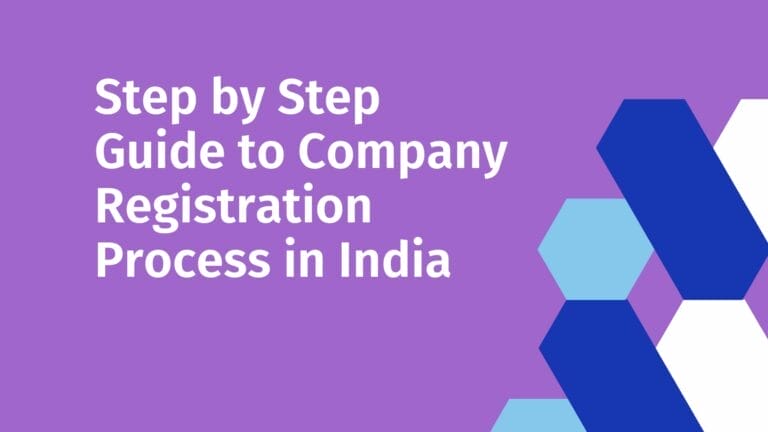Buy Back of Shares by Company: All You Need to Know
In the dynamic world of finance and corporate structures, learning about company shares’ buy-back is a significant aspect. The corporate taxation landscape often evolves in response to companies’ strategies to maximize shareholder value and maintain robust financial health. One such financial instrument that has gained heightened importance is the concept of “Buy-Back” of shares.
Buy-Back of shares signifies a process where a company repurchases its own shares from the shareholders. This mechanism of financial management serves multiple purposes — it can help consolidate the company’s stake holdings, increase earning per share, ensure optimized capital structure, keep hostile takeovers at bay, or even return surplus cash to shareholders.
In India, this process is governed strictly under the regulatory provisions stipulated by the Companies Act, 2013, the Companies (Share Capital and Debentures) Rules, 2014, and for listed companies, certain SEBI regulations apply. These governing elements ensure that the intricate process of a company buying back its own shares is conducted transparently and legally, thus assuring statutory compliance.
This article aims to elucidate the concept, conditions, procedural details, and regulatory landscape surrounding the buy-back of shares, especially for private companies. By the end of this article, even individuals having no background in finance should have a clear understanding of what a buy-back entails and how it is executed.
we will guide you through the various procedural norms, conditions to satisfy, and regulatory watch-outs a company must be aware of when initiating a buy-back process. By encapsulating this information, annual return filing and maintaining accurate records become streamlined for the company.
The Concept of Buy-Back
The term buy-back refers to the act of a company repurchasing its own shares or securities from its existing shareholders. This unique provision allows the company to approach its shareholders and offer to purchase their shares at a predetermined buy-back price. By doing so, the company reduces its total outstanding shares and thus, the equity ownership of the shareholders.
Buy-backs can be carried out through various modes as defined by Section 68(1) of the Companies Act, 2013. These modes include:
- Buy-Back from Existing Shareholders or Security Holders on a Proportionate Basis: This mode entails the company making a proportionate offer to all its existing shareholders or security holders based on their current shareholding.
- Buy-Back from the Open Market: In this mode, the company purchases its own shares from the open market, i.e., through the stock exchange, at prevailing market prices.
- Buy-Back of Securities Issued to Employees: Companies can also buy back securities that were issued to employees as part of a stock option or sweat equity scheme.
These modes offer flexibility to companies in structuring their buy-back strategies based on their specific requirements and market conditions.
To finance the buy-back, companies have access to different sources as per Section 68(1) of the Companies Act, 2013. These sources include:
- Free Reserves: Companies can utilize their accumulated profits (free reserves) to fund the buy-back.
- Security Premium Account: The security premium account, which holds the securities’ premium amounts received during the issue of shares, can also be used to finance the buy-back.
- Proceeds of the Issue: Companies can utilize the proceeds generated from the issue of shares or other specified securities to fund the buy-back. However, it’s important to note that the proceeds from a prior issue of the same kind of shares or securities cannot be used for the buy-back.
By utilizing these sources, companies ensure that the buy-back is conducted with appropriate financial backing.
Regulatory Restrictions on Buy-Back
When it comes to buy-backs, there are certain regulatory restrictions in place to ensure fairness, protect shareholders, and maintain the integrity of the financial system. These restrictions are outlined in Section 70 of the Companies Act, 2013. Let’s take a closer look at these restrictions:
- Prohibition on Buy-Back through Subsidiary or Investment Companies: Companies are prohibited from directly or indirectly purchasing their own shares or other specified securities through any subsidiary company, including their own subsidiary companies. They are also restricted from conducting buy-backs through any investment company or a group of investment companies.
- Default on Repayment or Financial Obligations: A company is not allowed to buy back shares if it has defaulted on the repayment of deposits, interest payment on deposits, redemption of debentures or preference shares, payment of dividends to shareholders, or repayment of term loans or interest payable to financial institutions or banking companies. However, if such defaults are rectified and a period of three years has lapsed after the rectification, the buy-back restriction no longer applies.
These restrictions ensure that companies maintain financial discipline and fulfill their obligations towards various stakeholders before engaging in buy-back activities.
Conditions for Buy-Back
To ensure that the buy-back process is conducted in a fair and transparent manner, certain conditions need to be fulfilled. These conditions are specified by Section 68 of the Companies Act, 2013. Let’s explore these conditions in detail:
- Authorization by Articles of the Company (Section 68(2)(a)): The buy-back must be duly authorized by the Articles of Association of the company. The Articles should explicitly permit the company to buy back its own shares.
- Shareholder Approval through Special Resolution (Section 68(2)(b) & (c)): The company must obtain approval from the shareholders through a special resolution passed in a general meeting. This approval is required to authorize the buy-back and outline the terms and conditions of the buy-back.
Note: If the buy-back does not exceed 10% of the company’s paid-up equity capital and free reserves, the approval of shareholders via a special resolution is not required. In such cases, the buy-back can be approved by the board of directors through a board resolution.
- Maximum Limit of Buy-Back: The aggregate value of the shares bought back should not exceed 25% of the company’s paid-up share capital and free reserves.
- Debt-Equity Ratio Post Buy-Back (Section 68(2)(d)): After the buy-back, the aggregate of the company’s secured and unsecured debts should not be more than twice the paid-up capital and its free reserves.
- Shares or Securities Should be Fully Paid-Up (Section 68(2)(e)): The shares or other specified securities that are bought back should be fully paid-up at the time of buy-back.
- Completion Period (Section 68(4)): Every buy-back should be completed within one year from the date of passing the special resolution or board resolution, as the case may be.
- Minimum Gap Between Buy-Back Offers (Section 68(2)(g)): There must be a minimum gap of one year between two successive buy-back offers. A company cannot make back-to-back buy-back offers within a year.
- Extinguishment of Shares (Section 68(7)): The shares or other specified securities bought back by the company should be extinguished or physically destroyed within seven days from the last date of completion of the buy-back.
- Waiting Period for New Buy-Back Offers (Section 68): After completing one buy-back offer, a company must wait for at least one year before making another buy-back offer.
- Post Buy-Back Restrictions on Issuance of Shares or Other Specified Securities (Section 68(8)): After completing a buy-back, the company is prohibited from issuing the same kind of shares or other specified securities for a period of six months, except in the case of certain exceptions like bonus shares, ESOPs, sweat equity, or conversion of debts/preference shares into equity.
By fulfilling these conditions, companies ensure that the buy-back process is conducted in compliance with the regulatory framework and protects the interests of shareholders.
Step-Wise Procedure for Buy-Back by Private Companies
Executing a buy-back of shares involves a series of steps that need to be followed diligently to ensure compliance with the regulatory framework and a smooth buy-back process. Here is a step-by-step procedure for buy-back by private companies:
- Authorization by the Articles (Section 68(2)): The first step is to ensure that the articles of the company authorize the buy-back of shares or other specified securities. If the necessary provisions are not present in the articles, they need to be altered to include this authorization.
- Convene Board Meeting (Section 68(2)): If the buy-back represents 10% or less of the total paid-up equity share capital and free reserves of the company, the board of directors can authorize the buy-back through a board resolution.
Note: The provisions of the Companies Act, 2013, and Secretarial Standard on Meeting of Board of Directors (SS-1) should be followed while convening the board meeting.
- Convene General Meeting (Section 68(2)): For buy-back exceeding the 10% threshold mentioned above, the company should obtain approval from its members by passing a special resolution in a general meeting.
Note: The provisions of the Companies Act, 2013, and Secretarial Standard on General Meetings (SS-2) should be followed while convening the general meeting.
- File Form MGT-14 with Registrar: The company should file a copy of the board resolution and special resolution, passed in the respective meetings, with the Registrar of Companies (ROC) through Form No. MGT-14. This filing should be done within 30 days of passing the resolutions.
Note: If a private limited company conducts a buy-back solely through a board resolution, there is no need to file Form No. MGT-14.
- File Letter of Offer (Rule 17(2)): If the buy-back is authorized by a special resolution, the company needs to file a letter of offer along with other required documents in Form No. SH-8 with the ROC before the buy-back. This letter of offer contains detailed information about the buy-back, such as the number of shares to be bought back, the price, and the mode of buy-back.
Note: Recent issues faced while filing Form No. SH-11 (Return of Buy-Back) recommend filing Form No. SH-8 even if the buy-back is authorized by a board resolution.
- File Declaration of Solvency (Section 68(6) and Rule 17(3)): The company should file a declaration of solvency in Form No. SH-9 with the ROC, along with the letter of offer in Form No. SH-8. This declaration should be signed by at least two directors (one of whom is the managing director, if any) and verified through an affidavit. The declaration states that the board of directors has conducted a thorough inquiry into the company’s affairs and concludes that the company is capable of meeting its liabilities and will remain solvent within a year from the date of the declaration.
- Dispatch of Letter of Offer (Rule 17(4)): Once Form No. SH-8 has been filed with the ROC, the company should dispatch the letter of offer to the shareholders or security holders immediately, but not later than 20 days from the date of filing.
- Offer Period (Rule 17(5)): The buy-back offer must remain open for a minimum of 15 days and a maximum of 30 days from the date of dispatch of the letter of offer. However, if all the members of the company agree, the offer period can be less than 15 days.
- Verification of Offers (Rule 17(7)): The company should complete the verification of the offers received within 15 days from the offer closure date. Unless a communication of rejection is made within 21 days from the offer closure date, the shares or securities lodged will be considered accepted.
- Open a Separate Bank Account (Rule 17(8)): After the offer is closed, the company should open a separate bank account and deposit the necessary funds to cover the sum due as consideration for the shares tendered for buy-back.
- Extinguishment of Shares (Section 68(7)): The shares or other specified securities bought back by the company should be extinguished or physically destroyed within seven days from the last date of completion of the buy-back.
- Closure of Offer (Rule 17(9)): Within seven days of the time specified in Rule 17(7), the company should make payment of consideration in cash to the shareholders or security holders whose securities have been accepted. In the case of non-acceptance or partial acceptance, the company should return the share certificates or the balance of securities within this timeframe.
- File Form SH-11 (Section 68(10) and Rule 17(13)): Within 30 days of completing the buy-back, the company should file a return in Form No. SH-11 with the ROC. This filing should include a description of the shares or other specified securities bought back, particulars of the holders of securities before the buy-back, copies of the resolutions authorizing the buy-back, and other relevant documents.
- Maintain the Statutory Register (Section 68(9) and Rule 17(12)): The company should maintain a register of shares or other specified securities bought back in Form No. SH-10. This register should be kept at the company’s registered office and should include authenticated entries by the company secretary or any authorized person.
By following this step-wise procedure, private companies can navigate through the buy-back process smoothly, adhering to the legal requirements and ensuring transparency.
Frequently Asked Questions (FAQs)
Can a private company buy back shares even if it is not listed on the stock exchange?
Yes, private companies can undertake the buy-back of shares even if they are not listed on the stock exchange. The regulations regarding buy-backs apply to both listed and unlisted companies.
Are there any restrictions on utilizing the company’s reserves for funding the buy-back?
Companies can utilize their free reserves, security premium account, or the proceeds from the issuance of shares or other specified securities to fund the buy-back. However, the proceeds from a previous issue of the same kind of shares or securities cannot be used for the buy-back.
Is shareholder approval required for every buy-back offer?
Shareholder approval through a special resolution is required for buy-back offers that exceed 10% of the company’s paid-up equity capital and free reserves. However, if the buy-back does not exceed this threshold, approval from the board of directors via a board resolution is sufficient.
What is the timeline for completing a buy-back?
A buy-back should be completed within one year from the date of passing the special resolution or board resolution, depending on the approval method. It is crucial to adhere to this timeline to ensure compliance with the regulatory framework.
Can a company make multiple buy-back offers within a short timeframe?
No, there should be a minimum gap of one year between two successive buy-back offers. A company must wait for at least one year after completing a buy-back offer before initiating another buy-back.
What happens to the shares or securities bought back by the company?
The shares or securities bought back by the company should be extinguished or physically destroyed within seven days from the last date of completion of the buy-back. This ensures that the bought-back shares are no longer part of the company’s share capital.
Conclusion
The buy-back of shares by private companies is a significant financial mechanism governed by the Companies Act, 2013, and the Companies (Share Capital and Debentures) Rules, 2014. Understanding the concept, conditions, and procedural requirements of a buy-back is crucial for companies looking to optimize their financial structure and maximize stakeholder value.
In this article, we have explored the meaning of buy-back, different modes of buy-back, sources of funds, regulatory restrictions, conditions to fulfill, and the step-by-step procedure private companies should follow for a buy-back. We discussed the importance of shareholder approval, the maximum limit of buy-back, debt-equity ratio post buy-back, and the requirement to maintain a statutory register.
It is essential for companies to strictly adhere to the regulatory framework, obtain the necessary approvals, and fulfill the prescribed conditions before embarking on a buy-back journey. Compliance with these regulations ensures transparency, protects the interests of shareholders, and maintains the integrity of the financial system.
It should be noted that the buy-back process can be complex, and seeking guidance from legal experts or chartered accountants is highly recommended to ensure full compliance with the legal requirements and regulations.
This concludes our comprehensive article on the buy-back of shares by private companies. We hope you found it insightful and informative.
Disclaimer
The materials provided herein are solely for educational and informational purposes. No attorney/professional-client relationship is created when you access or use the site or the materials. The information presented on this site does not constitute legal or professional advice and should not be relied upon for such purposes or used as a substitute for professional or legal advice.







